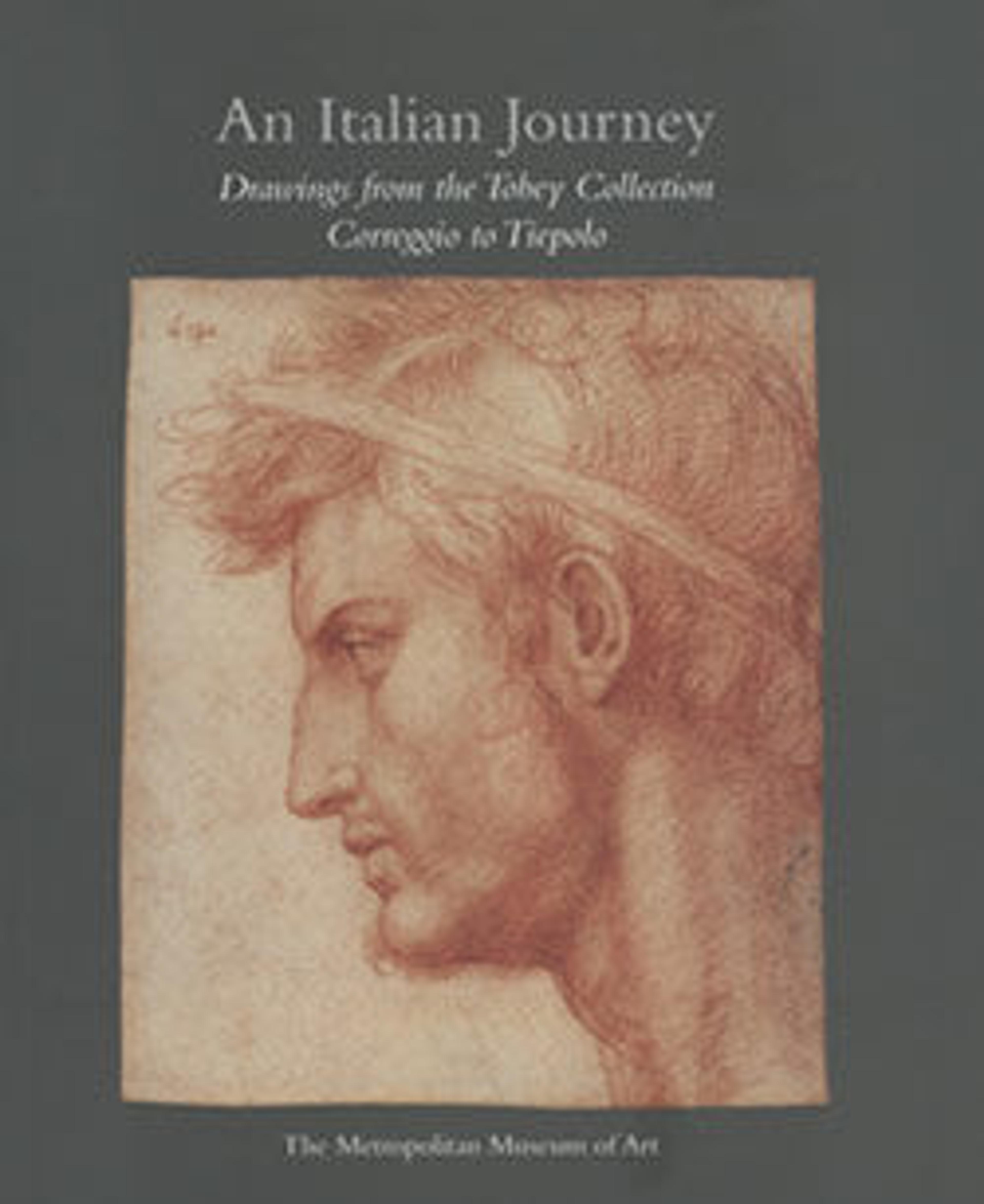Study after Michelangelo's Giorno (recto and verso)
Working from a small replica of Michelangelo's statue of "Day" on the tomb of Giuliano de' Medici in the New Sacristy, San Lorenzo, Florence, Jacopo Tintoretto has copied on both recto and verso the back view of the figure. Another double-sided study of the back of the statue, though seen from a quite different angle, is in the Musée du Louvre, Paris (see: Tietze, 1944, no. 1739). At Christ Church, Oxford, there is a double-faced study of the figure seen from above (Byam Shaw, 1976, vol. 1, no. 762, pls. 442,443, as Jacopo Tintoretto or studio).
Tintoretto was a great admirer of Michelangelo and drew many copies after his sculptures. The unusual-and impossible-viewpoint of this study of Michelangelo's Day from the tomb of Giuliano de Medici in the New Sacristy, S. Lorenzo, Florence, reveals that Tintoretto was working not from the original but from a small model. He must have studied the model in brightly lit conditions to achieve the strong contrasts of light and dark that characterize his drawings of sculpture.
Tintoretto was a great admirer of Michelangelo and drew many copies after his sculptures. The unusual-and impossible-viewpoint of this study of Michelangelo's Day from the tomb of Giuliano de Medici in the New Sacristy, S. Lorenzo, Florence, reveals that Tintoretto was working not from the original but from a small model. He must have studied the model in brightly lit conditions to achieve the strong contrasts of light and dark that characterize his drawings of sculpture.
Artwork Details
- Title:Study after Michelangelo's Giorno (recto and verso)
- Artist:Jacopo Tintoretto (Jacopo Robusti) (Italian, Venice 1518/19–1594 Venice)
- Date:ca. 1550–55
- Medium:Black and white chalk on blue paper
- Dimensions:13-3/4 x 19-7/8 in. (35 x 50.5 cm)
- Classification:Drawings
- Credit Line:Rogers Fund, 1954
- Object Number:54.125
- Curatorial Department: Drawings and Prints
More Artwork
Research Resources
The Met provides unparalleled resources for research and welcomes an international community of students and scholars. The Met's Open Access API is where creators and researchers can connect to the The Met collection. Open Access data and public domain images are available for unrestricted commercial and noncommercial use without permission or fee.
To request images under copyright and other restrictions, please use this Image Request form.
Feedback
We continue to research and examine historical and cultural context for objects in The Met collection. If you have comments or questions about this object record, please contact us using the form below. The Museum looks forward to receiving your comments.
